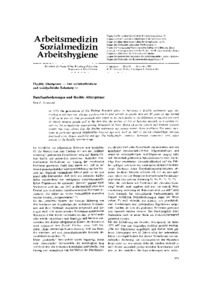Berufsanforderungen und flexible Altersgrenze
| dc.date.accessioned | 2010-03-01T13:24:51Z | |
| dc.date.available | 2010-03-01T13:24:51Z | |
| dc.date.issued | 1972 | |
| dc.identifier.uri | urn:nbn:de:hebis:34-2010030132128 | |
| dc.identifier.uri | http://hdl.handle.net/123456789/2010030132128 | |
| dc.language.iso | ger | |
| dc.rights | Urheberrechtlich geschützt | |
| dc.rights.uri | https://rightsstatements.org/page/InC/1.0/ | |
| dc.subject.ddc | 300 | |
| dc.subject.ddc | 320 | |
| dc.title | Berufsanforderungen und flexible Altersgrenze | ger |
| dc.type | Aufsatz | |
| dcterms.abstract | In 1973 the government of the Federal Republic plans to introduce a flexible retirement age. According to this new law, old age pensions can be paid already to people who are 63 years of age instead of 65 as at present. The government thus hopes to do more justice to the difference in capacity for work of elderly insured people and to the lact that the decline of life of humans depends to a certain extent on the occupational requirements demanded of them. Based on social science and medical research results this essay shows that the flexible retirement age cannot master these problems. The essay mentions in particular general relationships between age and work as well as special relationships between practised work, illness, disability and age. The bibliography includes literature connected with other aspects of the flexible retirement age. | eng |
| dcterms.accessRights | open access | |
| dcterms.bibliographicCitation | In: Arbeitsmedizin, Sozialmedizin, Arbeitshygiene. Stuttgart : Gentner, 7 (1972), Heft 12, S. 333-337 | |
| dcterms.creator | Tennstedt, Florian | |
| dc.description.et | Extern | ger |
| dc.subject.swd | Berufsanforderung | ger |
| dc.subject.swd | Flexible Altersgrenze | ger |
Dateien zu dieser Ressource
Das Dokument erscheint in:
-
Publikationen [122]

